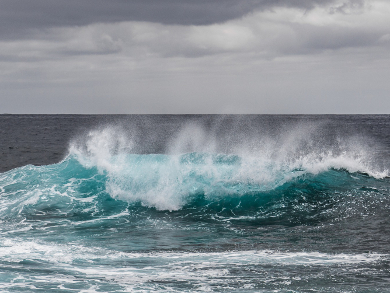Biological particles such as bacteria and fungal spores are commonly found in the Earth’s atmosphere. Airborne microbes can travel thousands of kilometers from their original source. Over land, the air contains on average about 19,000 bacteria and 24,000 fungal spores per cubic meter. For the oceans, which make up over 70 % of the Earth’s surface, however, there are few estimates for airborne microbe concentrations.
Eva Mayol, University of the Balearic Islands, Esporles, Mallorca, Spain, and University of La Rochelle, France, and colleagues have analyzed air samples from 118 locations over the oceans. The samples had been collected during the Malaspina 2010 Circumnavigation Expedition, an eight-month journey around the globe that covered the Atlantic, Indian, and Pacific Oceans. The team counted the microbes in the samples using microscopy and found median concentrations of 6,700 prokaryotes and 3,200 single-celled eukaryotes per cubic meter of air.
The researchers developed a model to estimate how many of these microbes originate from the sea itself and found that close to shore, a large part of the microbes stem from locations on land. With increasing distance from landmasses, the share of microbes originating on land decreases exponentially. According to the team, islands can act as “stepping stones” for terrestrial microbes traveling over the oceans. This could be observed, for example, around the Pacific Islands. The team also estimated that microbes can remain airborne for up to 17 days, and travel thousands of kilometers during this time. These results could help to explain the spreading of, e.g., pathogens around the globe.
- Long-range transport of airborne microbes over the global tropical and subtropical ocean,
Eva Mayol, Jesús M. Arrieta, Maria A. Jiménez, Adrián Martínez-Asensio, Neus Garcias-Bonet, Jordi Dachs, Belén González-Gaya, Sarah-J. Royer, Verónica M. Benítez-Barrios, Eugenio Fraile-Nuez, Carlos M. Duarte,
Nature Commun. 2017.
DOI: 10.1038/s41467-017-00110-9




